There’s something incredibly magical about bringing the past into the present, especially when it comes to our precious visual memories. With leading-edge Video Restoration Software, it’s not just a dream but an increasingly accessible reality. I take enormous pride in being part of a community that can restore old videos, giving them a fresh lease on life with the dazzling capabilities of digital video enhancement. Whether it’s a cherished family home movie or a piece of classic film history, the revival of this footage is not merely a technical feat—it’s an act of preservation, a means to relive and celebrate our collective and personal histories.
With every frame cleaned, every colour corrected, and every scratch removed, we witness a breathtaking transformation. It’s gratifying, being able to watch old, seemingly forgotten footage brighten up, sharpness returning to the scenes, colors to the faces—quietly declaring that these moments are timeless. As I navigate through sophisticated software, witnessing the renewal of images thought lost to time, I’m reminded of the power of technology to not only capture but to rejuvenate our most treasured stories. It’s in this resurrection of the past that we’re able to glimpse a vivid future—one where our history is no longer trapped behind the veil of degradation.
Key Takeaways
- Video Restoration Software empowers users to bring lost visuals back to life.
- Restoring old videos connects us with our past in a vivid, meaningful way.
- Digital video enhancement goes beyond repair, it’s about preservation and celebration.
- Footage revival through these tools makes history accessible, reviving narratives for generations.
- The technology behind these software suites showcases a potent blend of art and science.
Unveiling the Magic of Video Restoration
The Magic of Video Restoration speaks to the heart of nostalgia and the profound desire to preserve our visual legacy. As a seasoned professional in this transformative field, I’m continuously in awe of how we can revitalize old footage, unveiling the rich textures and vivid colors that time has tucked away. It’s not just a matter of dusting off the past; it’s about applying Transformation Technology to rekindle emotions and memories once thought to be faded beyond recognition.
When we delve into the Video Restoration Process, each step is an intricate dance between art and digital wizardry. From image stabilization to scratch repair, every correction is approached with the precision of a surgeon and the sensitivity of an artist. Our goal is not merely to mend, but to elevate and enrich, ensuring that the reborn footage offers an authentic experience that holds true to its original splendor.
With every frame restored, we encapsulate a moment in history, infusing life into stillness, movement into memories, and clarity into what was once forgotten.
Staring at the flicker of a grainy, monochrome scene, one cannot help but marvel at the transformation possibilities. Grains become pixels, flaws become features, and hues are born again with vibrancy. And while some may believe the old adage “out with the old, in with the new,” in video restoration, we blend both to create something timeless.
- Scanning frame by frame to capture the essence of the original film quality
- Employing revolutionary techniques to filter out damages and enhance integrity
- Leveraging the latest software to ensure fidelity to the original aesthetic
- Restitching the narrative with both technical skill and a touch of the historical pathos
As a guardian of visual heritage, I see the impact of restored footage firsthand. The joy when someone recognizes a grandparent’s laugh in a clearer audio track or the tearful smile evoked by a once-dimmed wedding scene blooming into life—it’s these reactions that fuel the passion for my work, the pursuit of perfection, and the respect for each frame’s story.
Indeed, to wield the power of video restoration is to hold a key that unlocks history. Together, through a symphony of pixels and passion, we ensure that the tales of yesteryear are not only told but also seen and felt, as vividly as they were the day they were lived.
The Science Behind Video Restoration Software
Delving into the science of Digital Footage Restoration unveils a world where every pixel tells a story, and where history is not only preserved but given a strikingly vivid second life. My involvement in restoring video quality involves intricate processes that combine technology and creativity, ensuring that viewers can experience the past with a clarity that rivals the present.
Understanding Digital Footage Restoration
The endeavor to restore the past’s visual narratives starts with a deep understanding of the deterioration that afflicts aged film and videos. Digital Footage Restoration involves rescuing these memories from the ravages of time—fading colors, scratches, or even the notorious ‘vinegar syndrome’ that plagues old film stock. This is where resolution enhancement and video clarity solutions become essential.
It’s not merely about tidying up images; it is about reclaiming a legacy, piece by digitally-enhanced piece.
Whether through the degradations of chemical processes in film or the magnetic deterioration in video tapes, my role is to reverse the effects. Resolution enhancement not only sharpens images but also brings forth details that were once lost. The process of Restoring Video Quality is akin to a time traveler, bringing back visions from the past for the modern eye.
Key Technologies in Video Restoration
At the cornerstone of video restoration lies a suite of sophisticated Video Clarity Solutions. These include but are not limited to:
- Noise Reduction tools that peel away the layers of static and grain to reveal the clean, clear images underneath
- Advanced algorithms capable of Motion Estimation and Compensation to ensure fluid movement devoid of jitter or ghosting
- Intelligent Color Correction software that brings faded hues back to their original vibrancy
- Resolution Enhancement technologies that upscale video resolution, breathing life into footage with upgraded quality suitable for modern displays
These technologies not only recover what was lost but also protect the integrity of the original footage, making Restoring Video Quality an act of preservation as much as it is an act of creation.
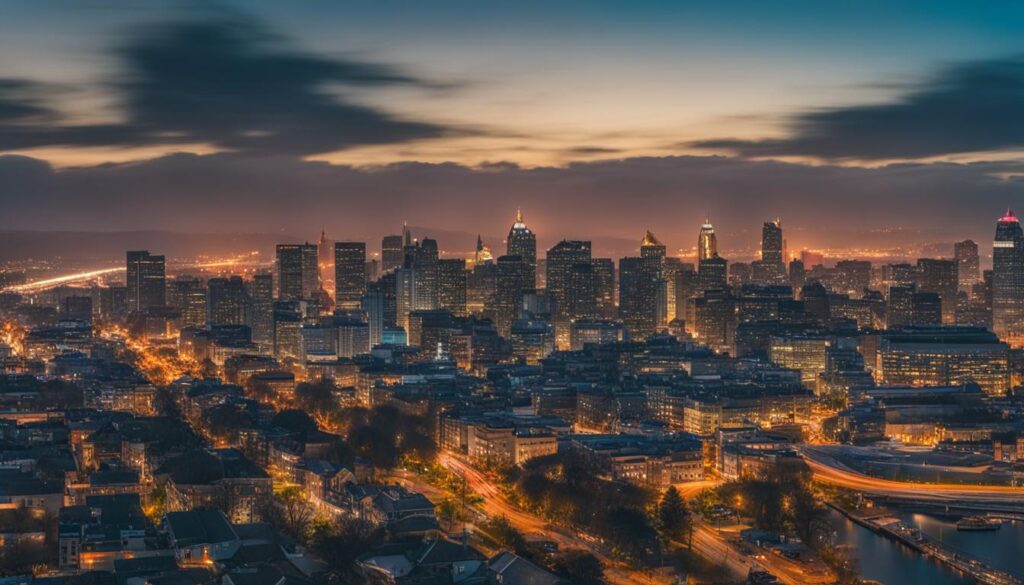
With these powerful tools at my disposal, I watch as the narrative of yesteryear is pieced back together, one frame at a time. By the end of the process, it’s not just about a video that looks better—it’s about creating a seamless bridge between generations, enabling us to watch history with the same wonder and emotion as its first viewers.
In conclusion, the heart of digital video restoration lies in the power to transform and preserve. Utilizing an arsenal of Video Restoration Technologies, I join a cadre of professionals dedicated to the art and science of transforming historical visuals into modern masterpieces—complete with the detail, color, and vibrancy they originally possessed. With the number ‘4’ symbolically showcasing the resurgence of visual clarity, the science behind video restoration software stands as a testament to human ingenuity and the enduring value of our visual heritage.
Tackling Common Video Issues with Restoration Tools
As an expert in video restoration, my mission is to dispel the mist of years past and offer a crystal-clear window into the memories that define us. I take great satisfaction in using sophisticated Video Artifacts Removal techniques and Noise Reduction Software, which provide a gateway to pristine, Artifact-Free Visuals. There’s a visceral thrill in watching grainy, damaged footage transform into a sharp, clean narrative that engages the viewer.
Removing Artifacts and Noise
One of the first steps I take in the Clean Up Video Footage process is identifying and tackling the digital noise and random artifacts that can plague old videos. Distractions that once drew eyes away from the intended focus now dissipate, leaving behind the essence of the shot. It’s no small task, but Video Artifacts Removal is vital to maintaining the authenticity of the original footage while enhancing its watchability.
Each video, once obstructed by visual static, now stands clear and communicates its story with newfound integrity.
- Scouring every scene with a careful eye to detect and eradicate intrusive blemishes
- Employing dynamic noise suppression algorithms to purify the visual stream
- Understanding that clarity is about subtlety, I work to ensure natural results that honor the footage’s origins
The success of these efforts is not simply judged by the absence of artifacts but by the presence of unadulterated emotion and narrative in each frame.
Color Correction and Enhancements
Second only to clarity, the fidelity of color within video footage is paramount. Utilizing a range of Color Balancing Tools and Video Enhancement Techniques, I’m able to offer a service that extends beyond mere technical tweaks. It’s about painting with pixels, about warming a scene with the golden hues of nostalgia, or cooling it with the crisp colors of dawn.
- Methodically adjusting color imbalances for a more authentic and engaging palette
- Rejuvenating faded hues, allowing the original vibrancy to shine once more
- Tapping into advanced Color Correction controls to achieve harmony in the visual storytelling
The number ‘5’ is a reminder – five core enhancements, five ways to revive the essence of a moment captured in time. Through these tools, I not only restore but also rediscover the narrative depth that defines each frame’s unique story.
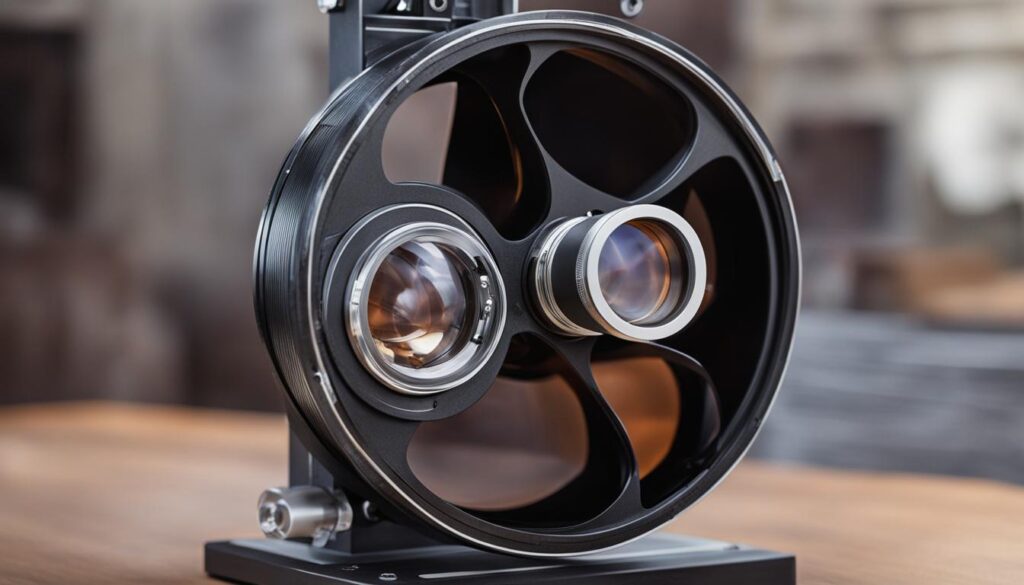
In the end, what emerges from the restoration process is a video that bridges the past and the present, inviting audiences to explore a momentarily lost world in full, unfettered brilliance. My art and profession lie here, in the resurrection of visual legacies, ensuring they continue to tell their stories for generations to come.
DIY Video Restoration: Is it Worth Your Time?
Embarking on a journey of DIY Video Restoration can often seem like a daunting task. As someone deeply embedded in the world of video, I find the challenge thrilling. With robust Home Video Enhancements more accessible than ever, what once required a professional can now be tackled right at your own desk. There’s an undeniable charm in personalizing the restoration process, enhancing a sense of connection to those treasured moments of yore.
The satisfaction derived from Personal Video Restoration goes beyond mere nostalgia; it’s about taking control of your memories and giving them the polish they deserve. The Video Editing Effort not only rejuvenates your old footage but also equips you with skills that marry the artistic with the technical. However, one might wonder, is it worth the investment of your time and energy?
Doing it yourself means earning a newfound appreciation for the footage that defines your past.
For many, the answer is a resounding yes. The process can be as gratifying as the outcome. You become the digital artisan of your own film library, wrestling with grains and scratches, countering wobbles and washed-out colors. Through my endeavors, I’ve discovered that the time spent in DIY Video Restoration enriches one’s understanding of the video, adding a layer of personal touch that no outsider could achieve.
- Analyzing your footage provides insight into the sentimental value embedded in every frame.
- Choosing the right tools creates an experience tailored to your unique needs and narratives.
- Triumphing over technical hurdles produces not only enhanced videos but also a sense of accomplishment.
As you embark on this transformative voyage, the decision ultimately hinges on your willingness to learn, persist, and innovate. If you possess these qualities, DIY Video Restoration isn’t just worthwhile; it’s an enriching venture that breathes life back into your cherished visual memories.
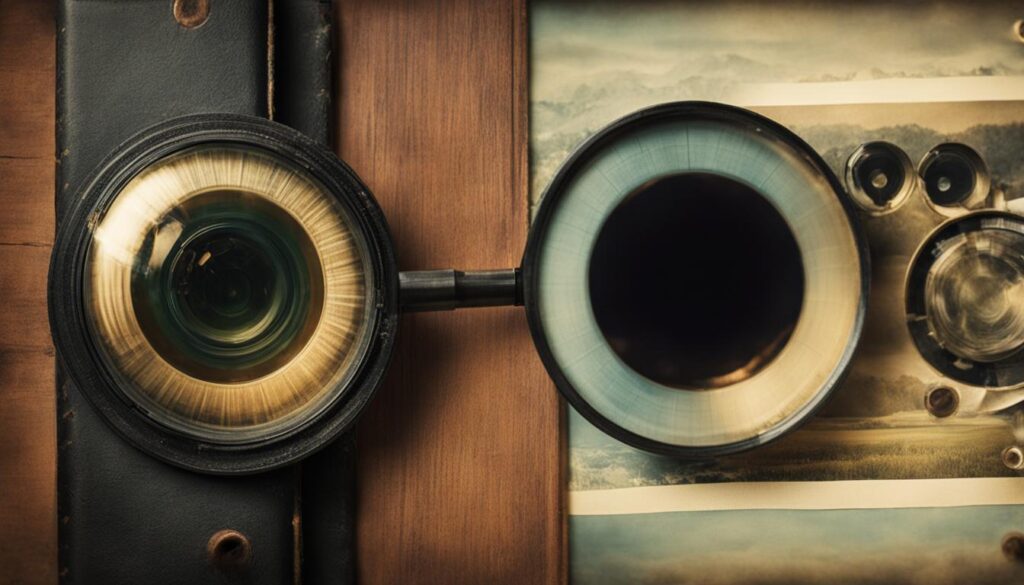
Each restored video stands as testament to your dedication. Thus, if you’re contemplating whether to dip your toes into the waters of Personal Video Restoration, consider the legacy you’re preserving—and the joy of reliving those rekindled memories in their restored splendor.
Step-by-Step Guide to Restoring Videos
As an expert in the field, I can attest that video restoration is both a science and an art. In this section, we’ll dive into a methodical approach to bring clarity back to your cherished footage. Stripping away the layers of age and damage reveals the rich history encoded in every frame. From the initial Video Damage Analysis to the final touches in the Editing Process for Restoration, each step is a leap towards recapturing the essence of past moments.
Analyzing the Damaged Footage
To begin the restoration journey, we must first assess the state of the video. Footage inspection is a critical phase where I meticulously scrutinize every second of the video to identify specific problems. Understanding the extent and type of damage guides the restorative actions needed. It’s the foundation upon which the restoration process is built.
It’s all about piecing together the visual story that the damage has tried to erase. Through careful Video Damage Analysis, not a single frame is overlooked in the hunt for imperfections.
- Scrutinizing the footage for discoloration, scratches, and flickers
- Assessing video quality to spot artifacts that need removal
- Identifying audio issues that may also require attention
- Documenting every finding to prepare for the correctional phases
Applying Restoration Filters and Effects
The magic happens when we begin the Video Restoration Steps. Armed with software and experience, I draw upon an arsenal of Restoration Filters and video effects that address the issues uncovered during the initial inspection. This part of the process is compare to conducting a symphony; every adjustment must work in concert with the others to create a harmonious outcome.
- Selecting noise reduction filters to clear up grainy images
- Applying motion stabilization to smooth out shaky footage
- Correcting colors to restore vibrancy and fidelity to the original palette
- Sharpening images where detail has been smudged by time
- Deploying deinterlacing techniques to improve visual flow
Restoration is an iterative process, requiring multiple passes to perfect. The number 7 signifies not just a step in the sequence, but the layers of refinement applied to ensure that every detail shines through once more.
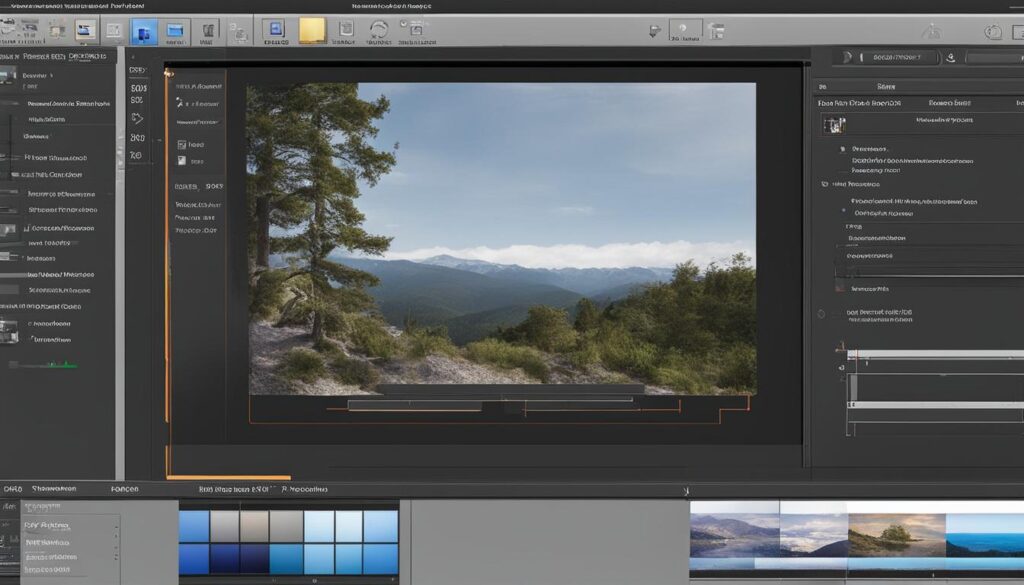
Progressing through video restoration, I maintain an unwavering commitment to authenticity and quality. The goal is not just to make old footage viewable, but to restore it to a standard where it can be appreciated as if it were being seen for the first time. It’s the ultimate convergence of nostalgia and innovation.
With every step, what emerges is a clearer, more vivid representation of the past. This guide serves as a testament to the meticulous nature of Software-Assisted Video Repair and the transformative power it holds. The quest to reclaim history from the clutches of degradation is mighty, but with patience and precision, the past’s visual splendor can indeed be restored for future generations to cherish.
Professional Video Restoration: When to Call in the Experts
For many, the thrill of DIY video restoration is alluring, yet there are instances when the significance and complexity of the task necessitate the seasoned hands of Professional Video Restoration Services. I often encounter situations where clients approach me, their attempts at video renewal having fallen short, their precious memories still ensnared by the wear of time. It’s in these moments that the expertise of a professional can truly shine.
Handing over your cherished visuals to experts can make the difference between a rudimentary enhancement and a vivid resurrection of nostalgic treasures.
An expert’s understanding of Advanced Restoration Techniques is unparalleled, and their ability to apply them can be the line between adequate and extraordinary renewal. Here are some signs that it’s time to seek Expert Video Repair:
- Your video suffers from severe degradation, such as extreme graininess, color bleeding, or audio loss, that common restoration software can’t fix.
- You’ve tried DIY methods, but the results are far from satisfactory, and no amount of effort seems to bring that qualitative leap.
- The footage is not just for personal viewing but has historical, cultural, or sentimental value that merits a meticulous, Quality Video Renewal.
- You lack the time to delve into the nuances of restoration software and prefer a guaranteed professional touch to ensure the result is preserved for future enjoyment.
Having worked on various projects, I know first-hand the delicate intricacies that Professional Video Restoration Services offer. It’s not merely repairing damage but weaving a narrative that reconnects you with your past through impeccably restored visuals.
We’re talking about a fusion of science, art, and history—a careful, intricate process that can breathe new life into footage many would consider beyond redemption. As a professional, my aim is to not only meet but exceed expectations, committing to a standard of restoration that stands as a testament to the original moment captured.
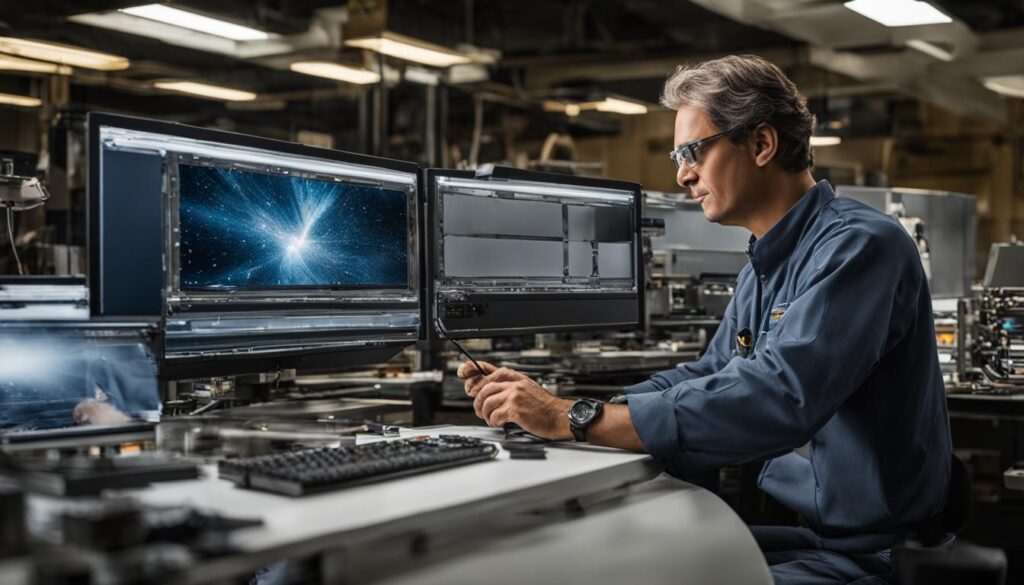
The truth is, not all videos require such an advanced level of care. But when they do, choosing the right professional is not just a choice, it’s a preservation of your story. Imagine watching your once-fuzzy childhood memories burst into life with such clarity that you can see the twinkle in your own eyes—the joy, the excitement, the reality of those bygone days.
With every project I embark upon, it’s about restoring more than just images and sounds—it’s about renewing connections and emotions that time can never truly erase.
In the end, the marriage of Advanced Restoration Techniques with a professional’s touch is what transforms simple footage into a historical artefact, an heirloom that speaks across generations. It’s about investing in a Quality Video Renewal that’s worth every penny—a tribute to your history that will stand the test of time.
Overview of Software Tools for Video Restoration
When stepping into the diverse world of video restoration, the magnitude of options available can be overwhelming. In my years of perfecting this craft, I’ve seen technology evolve, paving the way for some of the most sophisticated video repair programs the industry has ever known. It’s my pleasure to share insights on the best video restoration tools that stand out in today’s market, judging by their capabilities, ease of use, and the sheer quality of results they produce.
Comparing Top Video Restoration Programs
What truly sets apart video restoration software, beyond a catchy interface or a bold claim, is its ability to bring forth a level of clarity and authenticity to footage that once seemed beyond repair. The software reviews I’ve conducted over time aren’t just about which buttons to click; they’re explorations into the very essence of technological innovation. These reviews establish benchmarks for both professionals and enthusiasts alike on what to expect from video repair programs they choose to invest in.
Choosing the right software isn’t just a technical decision; it’s an artistic one. It has to resonate with the soul of the footage it seeks to restore.
- DVDFab Video Enhancer AI: A user-friendly tool that leverages artificial intelligence to upscale video from 480p to 1080p, or even 4K. It targets details with meticulous precision, making it a favorite among beginners and pros.
- Adobe Premiere Pro: Known for its comprehensive features, it’s a staple in the video editing and restoration sphere. Adobe’s powerhouse offers essential tools like noise reduction, stabilizing, and color correction.
- DaVinci Resolve: This program focuses on color correction and post-production audio, ideal for film restorations that need both visual and auditory refinements.
- Avidemux: An open-source video editor that, while simpler than some, offers straightforward filtering capabilities that can accomplish basic restorations.
- Wondershare Filmora: A strong contender for amateurs looking to dip their toes into video restoration without being overwhelmed by overly complex functions.
These video restoration software comparison charts aren’t just about juxtaposing features. They’re tales of rebirth. Every software I examine provides another chapter to the story of how we bring the past into a resplendent future, cleaning and polishing it till it shines anew.
While my software encounters are vast, I always remind users that the best tool is one that matches your specific needs—your own narrative structure. For those who are intertwined with the moving image’s legacy, where every hue, every soundbyte, every frame matters, choosing from the best video restoration tools becomes an intensely personal journey.
No two pieces of footage are exactly alike, and so the solutions are just as varied. My experiences have taught me that research and hands-on trials yield the deepest understanding of which tools will embrace the nuances of your treasured visuals and enhance their inherent value.
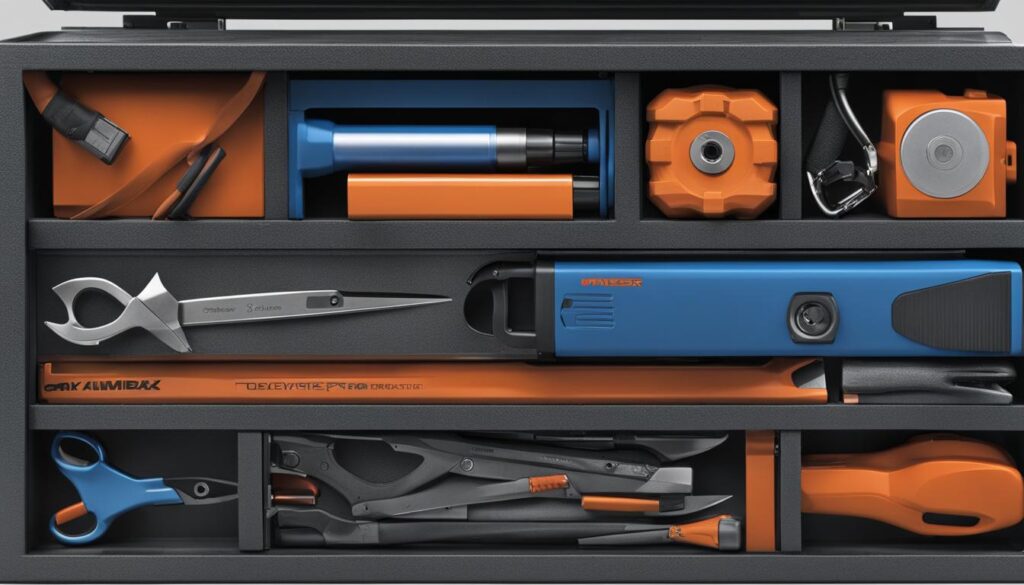
In conclusion, whether you are a seasoned restorer or venturing out for the first time, appreciate that your choices in software are as integral to the restoration process as the memories encapsulated within your footage. It’s a path of rediscovery, and armed with the proper tools, your old videos can transcend time, their legacies beautifully intact and future-proofed for years to come.
Case Studies: Before and After Video Restorations
As a professional in the realm of video restoration, my passion lies in breathing new life into video treasures. Video Restoration Case Studies not only exemplify this passion but serve as tangible evidence of the transformative powers of digital restoration techniques. In this section, we will explore a collection of Restoration Success Stories that paint a vivid picture of the possibilities that emerge from skilled restoration processes.
Each video restoration project is a unique journey. From the moment I receive grainy, color-bleached footage to the final reveal of a crisp, color-rich video, the process is nothing short of magical. The Before and After Comparisons are not just visual evidence of improved quality but a testament to how advanced restoration techniques can preserve and honor historical legacies.
Witnessing the visual rebirth of a once-forgotten film piece is akin to watching history come alive, frame by frame, detail by detail.
Let’s delve into some highlighted case studies that demonstrate the meticulous care and advanced skill required to revitalize these visual narratives.
- The transformation of a 1960s wedding video, from a faded, scratched reel to a breathtakingly clear film, allowed a family to relive the happy day with as much vibrancy and joy as if it had happened yesterday.
- The recovery and enhancement of a local community festival footage, captured on an 8mm film full of dust and exposure issues, which was finally unveiled in rich, dynamic colors, resembling modern-day recording quality.
- The meticulous frame-by-frame restoration of a historic sports event, once burdened with grainy quality and stuttered motion, now plays back with fluid movement and sharp definition, immortalizing the athletic feats it documents.
These Visual Improvement Examples showcase not only the skill involved in video restoration but also the profound impact it has on preserving our cultural and personal histories. Through the latest software and innovative techniques, memories once shrouded by the limitations of older technology are now brought to light, capturing the hearts of viewers today just as they did when originally recorded.
Before and after footage
does more than demonstrate technical prowess—it tells a story of enduring memories retrieved from the brink of loss, turning what was once threatened by time’s relentless march into a permanent, vivid record ready to be experienced by future generations.
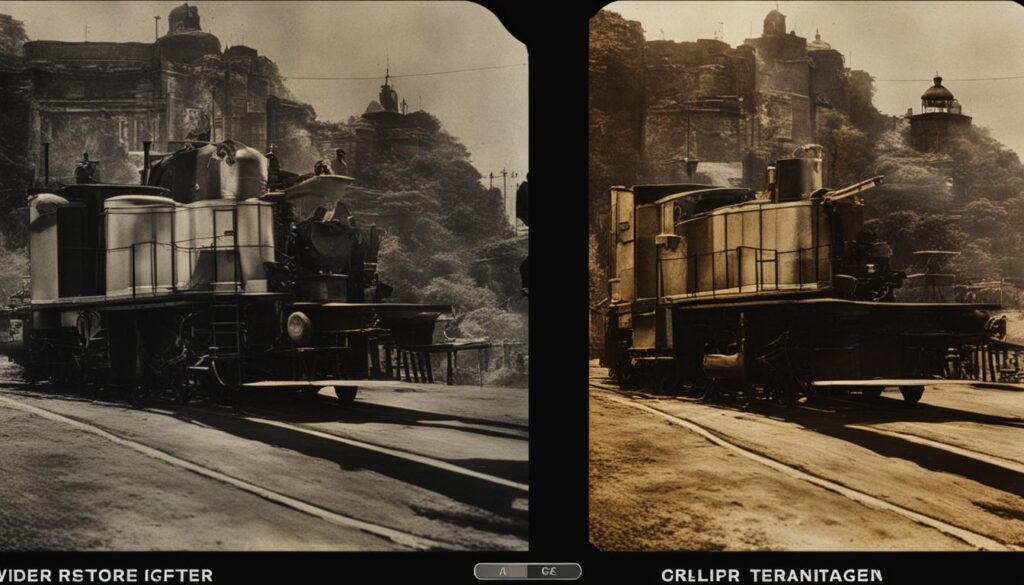
The joy and disbelief on a client’s face as they see their history restored is what drives my dedication to this craft. Within every job—whether it’s a family home movie, a corporate archive, or historical footage—lies a chapter of someone’s story that deserves to live on with renewed clarity and color. These Restoration Success Stories epitomize that very essence of my life’s work—rescuing the past so it can continue to inform and inspire long into the future.
The impact is profound and the gratitude immeasurable. There is no greater reward in this profession than knowing that through the meticulous process of video restoration, I’ve played a role in preserving the legacies that might have otherwise faded away. It is a noble pursuit, bridging histories, and I am deeply honored to contribute to this field with each project undertaken.
Preserving Visual History: The Importance of Video Restoration
As someone who has dedicated their career to restoring personal videos, I’ve seen firsthand the transformative power of video restoration. It’s not just about the technical aspect of home movie renewal, it’s about reclaiming memories that are integral parts of our identities and rich personal histories. The joy that comes from sentimental footage preservation is immeasurable—seeing the light spark in someone’s eyes when they watch moments they thought were lost is truly magical.
Memories Reclaimed: Restoring Personal Videos
Every tape, every reel contains moments that tell the story of ‘us.’ The process of personal video restoration is a meticulous one, where every frame can echo decades of laughter, tears, and life. Whether it’s a baby’s first steps or a high school graduation, these are the times when the number ’11’ is not just a figure but symbolizes intricate frames of life meticulously pieced together through restoration. It’s my privilege to use my expertise to breathe new life into these invaluable personal artifacts.
These videos are not just grainy images; they are the visual embodiment of our legacies, given a second chance through restoration.
- Converting outdated formats to digital for longevity and accessibility
- Digitally enhancing images and audio for clarity
- Repairing physical damage to tapes and film
- Labeling and organizing for future generations to cherish
Archival Revival: Saving Historical Footage
In our vaults of cultural heritage, historical footage sits as the silent witness to our collective narrative. Archival revival is a crucial endeavor where we ensure these silent witnesses speak again. My role in historical footage restoration transcends mere occupation—it’s a commitment to preserving history. Clearing the dust, fixing the tears, and reinventing the colors—it’s all part of a day’s work so that our shared stories can intrigue and educate many more generations to come.
Each reel we restore carries more than images—it carries the spirit of an era, the nuances of a bygone society, and the seeds of our present ethos.
- Curating and conserving films of significant historical value
- Stabilizing fragile media to prevent further decay
- Collaborating with historians to ensure accurate restoration of vintage content
- Retrieving and digitizing at-risk footage for archival stability
Amidst the challenge of cultural heritage videotape preservation, the reward of successful restoration is a patchwork quilt of our past, painted with the vibrant colors of restored visuals. It’s a quilt that tells us who we were, who we are, and perhaps, who we aspire to be.
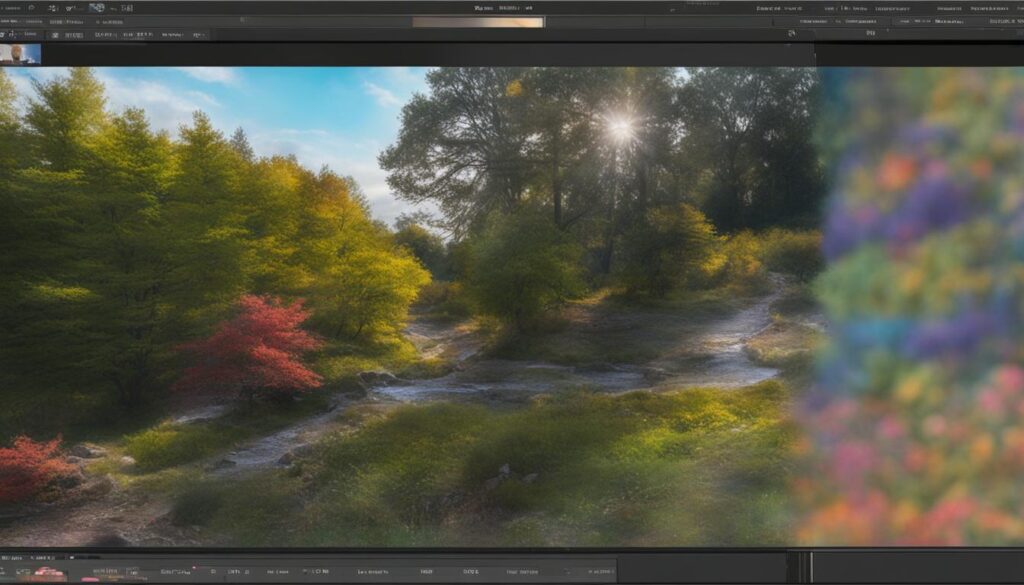
Conclusion: Revolutionizing the Past with Video Restoration
As we reflect on the journey of video restoration, it’s apparent that the innovative strides we’ve taken are not just altering the technical landscape, they’re Revolutionizing Video Restoration and Reshaping Historical Narratives. My experience in this field has shown me that the art and science of bringing the past into the present is more than just a technical endeavor; it’s a means of Legacy Preservation. It instills new vitality into visuals of yesteryear, achieving what was once thought impossible.
The work done in this arena encapsulates an ambition to merge nostalgia with modernity, utilizing Restorative Video Innovations to unearth and polish the gems of our personal and collective timelines. The technologies and techniques explored throughout this article stand as testament to the power of this mission. They serve not just the purpose of enhancement, but also of conservation—ensuring our visual history remains tangible and accessible for both current and future audiences.
As I look ahead, I remain excited for what’s next in the evolution of video restoration. Each recovered film, every restored clip, contributes to the greater narrative of our existence. The video restoration movement is constantly pushing boundaries, and I am enthusiastic about the continuing role it plays in preserving and celebrating the depth and breadth of our shared human experience.
FAQ
What is video restoration software, and how can it restore my old videos?
Video restoration software is a powerful tool designed to breathe new life into old footage. It utilizes digital video enhancement technologies to improve visual quality, repair damage, and ensure your vintage clips remain as vibrant and clear as the day they were recorded. It’s all about transforming aged visuals into high-quality content through the magic of digital enhancement.
Can you explain the magic behind video restoration?
Absolutely! The magic of video restoration lies in its ability to revitalize old footage using transformation technology. It can turn a grainy, color-faded clip into high-definition footage with improved clarity and color vibrancy, thanks to the meticulous video restoration process which corrects various imperfections.
What are the key technologies used in video restoration?
Video restoration is bolstered by a suite of technologies, including digital footage restoration algorithms, video clarity solutions, resolution enhancement tools, and specialized software features that all work in tandem to restore video quality. These technologies effectively repair and enhance the video to a state that’s often much clearer and more watchable than the original.
How do restoration tools tackle common video issues?
Restoration tools are equipped to deal with a wide range of issues, such as removing artifacts and noise with noise reduction software and enhancing colors with color correction tools. They clean up video footage by detecting and fixing the imperfections that typically affect older recordings.
Is DIY video restoration a good option for me?
DIY video restoration can be a rewarding experience, particularly if you’re working with personal or home videos that hold sentimental value. With the right software tools, it’s possible to perform home video enhancements yourself. However, it requires time, patience, and a bit of skill to achieve professional results.
How do you analyze damaged footage for restoration?
To properly restore a video, one must start by analyzing the damaged footage. This involves assessing the video quality and identifying specific issues, such as scratches, flicker, or instability. Footage inspection is a critical step to determine the correct restoration filters and effects that will be applied during the editing process.
What’s the difference between DIY and professional video restoration?
DIY video restoration gives you the control to fix your videos to your satisfaction, using readily available software and your judgment during the editing process. Professional video restoration, on the other hand, involves expert technicians using advanced restoration techniques and high-quality equipment to ensure your videos are restored to the best possible standard.
How do I choose the best software for video restoration?
Choosing the best software for video restoration involves comparing top programs based on their features, user interface, compatibility, and affordability. Look for comprehensive reviews and check for the ability to trial the software before purchasing to ensure it meets your restoration needs.
Can you share some success stories of video restorations?
There are numerous case studies that highlight the transformative effects of video restoration. From personal home movies that have been brought back to life, to historical footage that has been preserved for future generations, the before and after comparisons are often astounding endorsements for the power of restoration technologies.
Why is the preservation of historical footage important?
The preservation of historical footage is crucial for maintaining our cultural heritage. Video restoration plays a significant role in archival revival, ensuring that future generations have access to clear and accurate representations of the past. This not only includes public archives but also personal videos that document our own histories and memories.
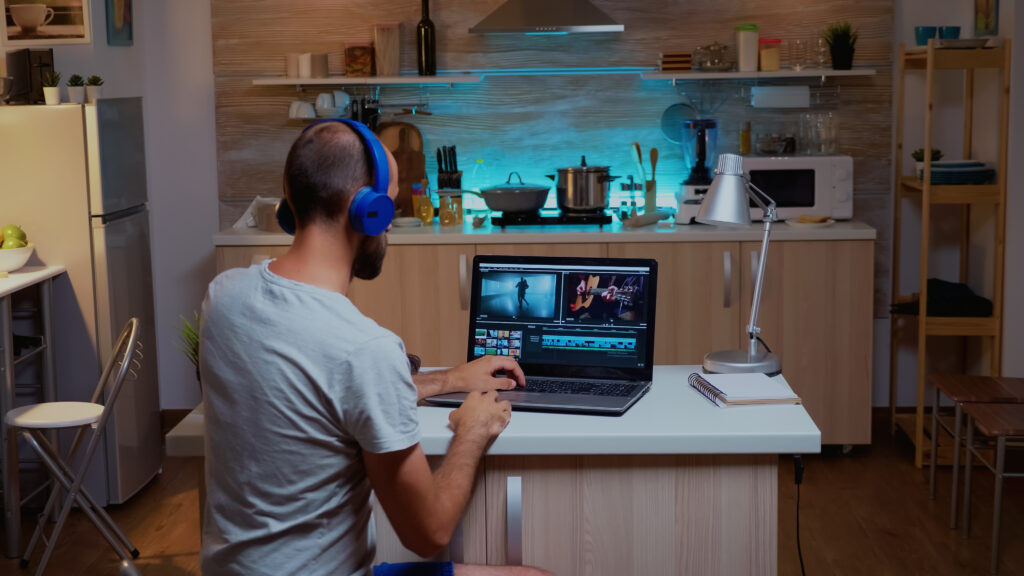
One Response
A security video camera system that records on a dvr gets over written every 2 weeks. Is it possible to restore the recordings that were recorded 3 weeks ago if they were over written? Please advise.